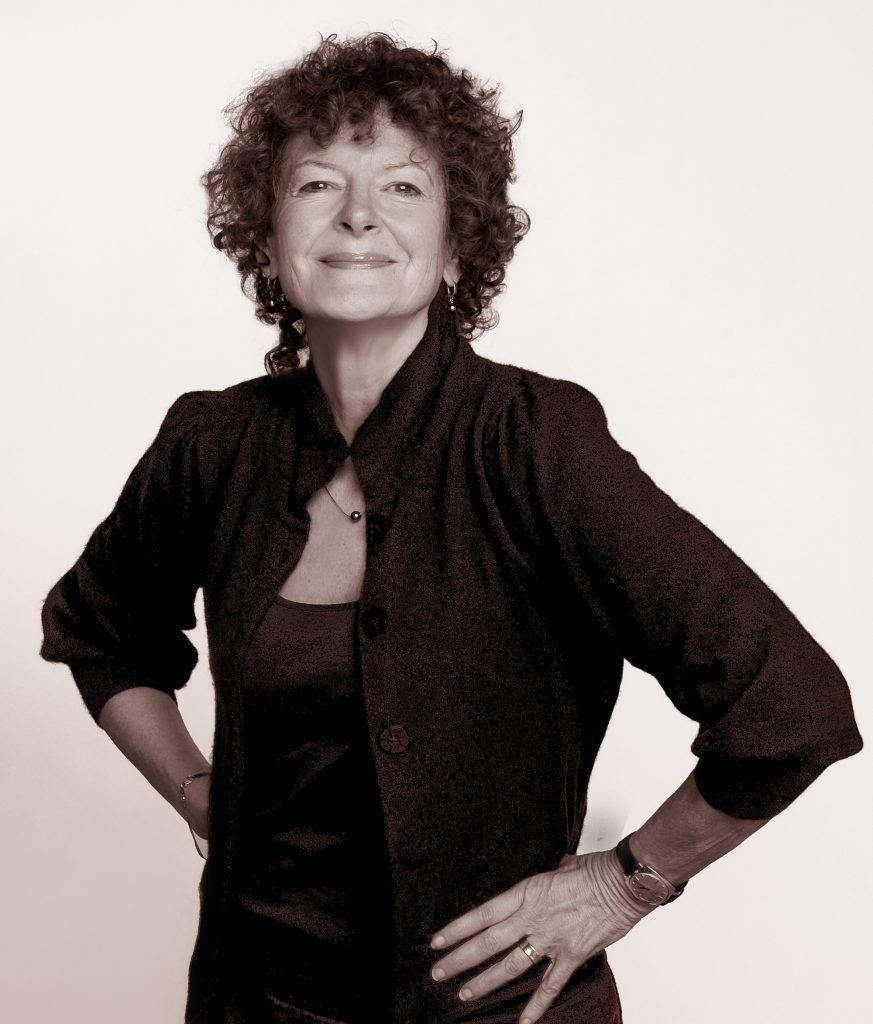In the mid-2000s, Kevin Ormsby first met Jini Stolk. He was working with Ballet Creole at the time and attended a marketing workshop facilitated by Donna Walker-Kuhne and hosted by Creative Trust, an innovative program to build organizational sustainability in the performing arts. He says he “immediately fell in love … Jini was able to hold the space with such grace and such openness.”
Fast-forward to May 2022 when Ormsby, now the artistic director of KasheDance and program manager at Cultural Pluralism in the Arts Movement Ontario, walks into the AGO as a finalist for the Johanna Metcalf Performing Arts Prize. “Who do I see is one of these people, you know, that have held me in space, that has been open to me being in space,” says Ormsby. Stolk flouted her prearranged seat and sat down for the evening at Ormbsy’s table. “One of the last things we did was she offered me a toast [for] being a finalist … and I offered her a toast for all her contributions to the sector, but also for all the amazing things that I’ve learned because of her work.”

Stolk passed away on Aug. 25, 2022, after more than five decades of service to the arts. She had an immense love for dance. In addition to leadership roles at the Association of Canadian Publishers, the Toronto Theatre Alliance (now the Toronto Alliance for the Performing Arts) and more, she was managing director of Toronto Dance Theatre (TDT) from 1994 to 2000.
Shana Hillman, currently the executive director of East End Arts, was the development manager of TDT during Stolk’s tenure there. “She was just so connected to the community,” says Hillman. During the annual Cabbagetown Festival, she would let neighbours host their yard sales in front of TDT – even when they did so in support of the National Ballet School. “A lot of people would probably think, Why would you not have it in support of TDT? But [she had an] understanding that dance and this Cabbagetown community was an ecosystem.”
Amy Bowring remembers being 24 years old around the same time, working a little farther south at the Canadian Children’s Dance Theatre (now called Canadian Contemporary Dance Theatre) at the start of her career, and being a part of Cabbagetown community meetings with Stolk. While the details of the meetings have faded, the presence that Stolk lent the room has stayed with her. “That’s the thing that stands out, not what the meeting was about, or even who else was there, but the fact that she was there, and she had this way of making you feel like you were a part of the community – and what you had to say was just as important as anyone who’s been there for decades and decades.”
Hillman went on to work with Stolk at Creative Trust shortly after its launch and maintained a close connection with her even as she progressed through her career in other organizations. Hillman described her as an “East End Arts super fan” who would send emails of encouragement after reading their newsletter, despite the fact she never lived in the east of Toronto. “Being an executive director of an arts organization is thankless,” acknowledges Hillman. “She was always there telling people they were doing a good job, giving them advice. And also giving people, kind of, the courage to break the system sometimes, or disrupt the system in a really gentle, kind way.”

The Creative Trust program is inarguably part of Stolk’s lasting legacy. Claire Hopkinson, director and CEO of Toronto Arts Council and Toronto Arts Foundation, was part of the original steering committee of the Creative Trust alongside Stolk (then in her role at TDT), Joan Bosworth at Opera Atelier and Mallory Gilbert at Tarragon Theatre. They were interested in finding collective solutions to challenges facing performing arts organizations. “It was a very difficult time for the arts in Toronto and Ontario at that point,” recalls Hopkinson. “Big cuts to the Ontario Arts Council and stagnant funding in Toronto meant that mid-size organizations, without access to corporate philanthropy, were really suffering.”
Stolk took the helm of the program and led its unprecedented capital campaign, raising over $7 million in endowment funds. Nearly $4 million was distributed directly to 21 mid-size performing arts organizations. Hillman notes that at the end of this first phase of the program, all participating organizations were deficit-free, some for the first time in decades. Many more organizations took part in the Creative Trust’s workshops and professional development activities. Hopkinson calls it the “largest arts sustainability program in Canada,” with “people and organizations still benefiting from that learning and legacy.”
There was a collective trust in Stolk’s ability to drive this ambitious work forward. “Jini was the right person,” says Myles Warren. “I think Jini always had a bigger sense, a bigger vision of what’s out there and knowing what’s necessary to bring those players together.” Her unique personality and skill set allowed her to drive change in a way that felt comfortable. “There was humility. There was generosity, there was grace.” In challenging conversations and collaborations with industry gatekeepers, he says, “she was able to open the gate without them even knowing it.”
Stolk’s deep passion for arts and artists fuelled her work. “Jini embodied the fact that arts administrators are also creative. We had to approach solutions with creativity, intuition and ingenuity,” says Hopkinson.
When Stolk led TDT, Warren was executive director of Dance Umbrella of Ontario and observed her deep attentiveness to the needs of dancers. He describes her as a “really amazing, sort of compatriot in supporting the dancer. You know, understanding the grace and the fragility of that individual to realize the vision and the dream of choreographer and artistic director.” He describes her as “somebody who just came up underneath and made sure there was a strong enough foundation. Didn’t interfere, didn’t question a direction, but made sure there was enough support to allow that to happen … Jini was one of our very best dance managers across the country at that time.”

Even as he moved onto the Ontario Arts Council, Warren continued to admire Stolk’s skillful diplomacy. “It’s an amazing ability and capacity to be able to work with multiple players, multiple personalities and attitudes and aptitudes and walk with them carefully, and be a guide along the way,” he says.
Stolk’s engagement with the arts was not limited to her professional duties. Outside of her formal roles and voluntary commitments, she took regular Zumba classes and embraced online dance classes during the pandemic. She was also passionate about native plants and the tree canopy.
One might say that behind every successful performing arts company is a skilled and dedicated arts manager, yet Stolk’s impact was never hidden in the background. Nearly everyone interviewed for this article spoke about how it felt when she entered a meeting. “You felt there was a sense of light walking into the room,” says Warren.
Stolk masterfully built networks of support for the arts, even in challenging political climates, served as a mentor for a generation of arts leaders working beside her and innovated new models of arts development that continue to influence the sector countrywide. Mayor John Tory’s statement calls Stolk, “an incredible force in the local arts scene,” who “served the Toronto arts community with energy, determination, integrity and creativity.” Or, as Hillman wrote in her notes for Sunday’s celebration of life event, quite simply, “Jini was a giant.”
Dance Media Group strengthens the dance sector through dialogue. Can you help us sustain national, accessible dance coverage? Your contribution supports writers, illustrators, photographers and dancers as they tell their own stories. Dance Media Group is a charitable non-profit organization publishing The Dance Current in print and online.

Tagged:






